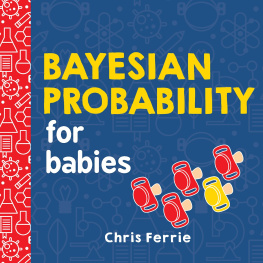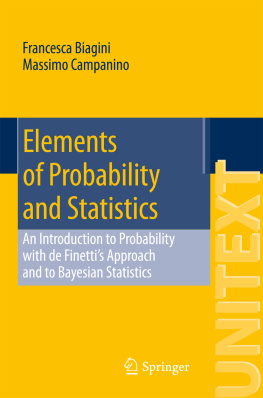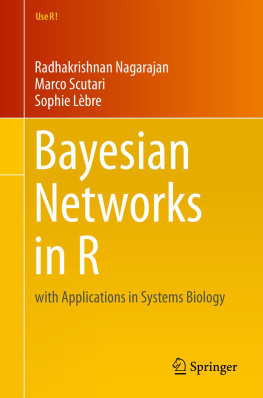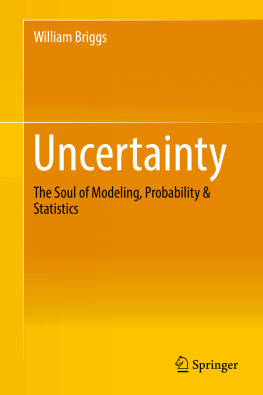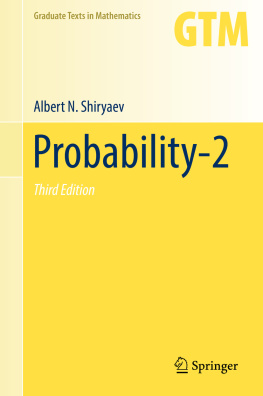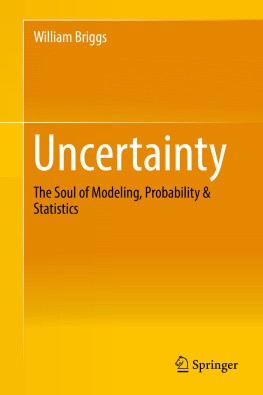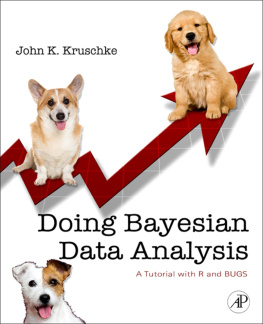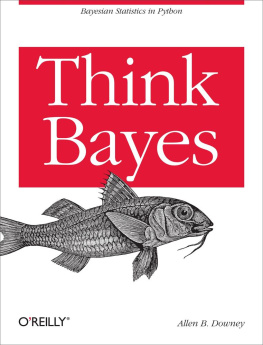Albert Jim - Probability and Bayesian Modeling
Here you can read online Albert Jim - Probability and Bayesian Modeling full text of the book (entire story) in english for free. Download pdf and epub, get meaning, cover and reviews about this ebook. year: 2019, publisher: CRC Press LLC, genre: Children. Description of the work, (preface) as well as reviews are available. Best literature library LitArk.com created for fans of good reading and offers a wide selection of genres:
Romance novel
Science fiction
Adventure
Detective
Science
History
Home and family
Prose
Art
Politics
Computer
Non-fiction
Religion
Business
Children
Humor
Choose a favorite category and find really read worthwhile books. Enjoy immersion in the world of imagination, feel the emotions of the characters or learn something new for yourself, make an fascinating discovery.

- Book:Probability and Bayesian Modeling
- Author:
- Publisher:CRC Press LLC
- Genre:
- Year:2019
- Rating:5 / 5
- Favourites:Add to favourites
- Your mark:
- 100
- 1
- 2
- 3
- 4
- 5
Probability and Bayesian Modeling: summary, description and annotation
We offer to read an annotation, description, summary or preface (depends on what the author of the book "Probability and Bayesian Modeling" wrote himself). If you haven't found the necessary information about the book — write in the comments, we will try to find it.
Probability and Bayesian Modeling — read online for free the complete book (whole text) full work
Below is the text of the book, divided by pages. System saving the place of the last page read, allows you to conveniently read the book "Probability and Bayesian Modeling" online for free, without having to search again every time where you left off. Put a bookmark, and you can go to the page where you finished reading at any time.
Font size:
Interval:
Bookmark:
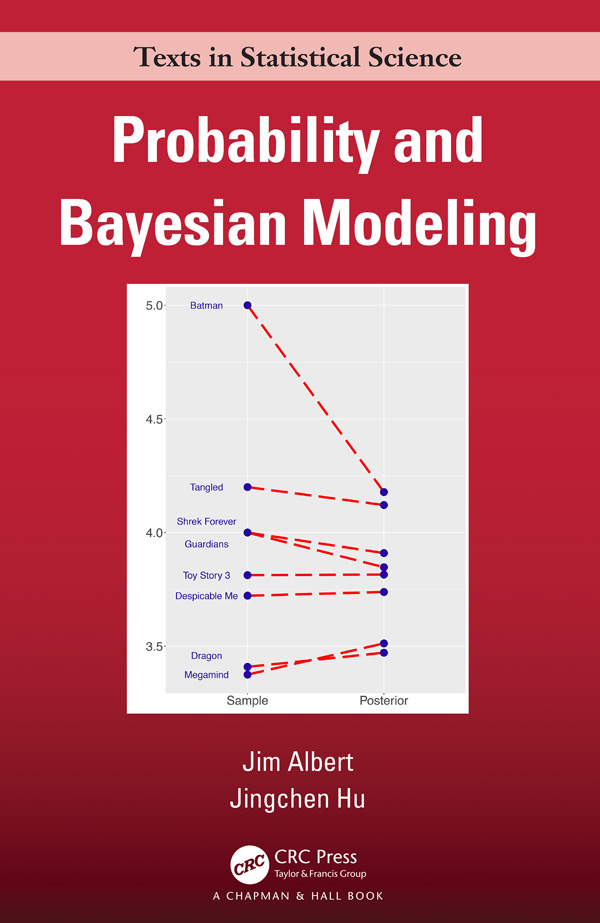
Probability and Bayesian Modeling
CHAPMAN & HALL/CRC
Texts in Statistical Science Series
Joseph K. Blitzstein, Harvard University, USA
Julian J. Faraway, University of Bath, UK
Martin Tanner, Northwestern University, USA
Jim Zidek, University of British Columbia, Canada
Recently Published Titles
A Computational Approach to Statistical Learning
Taylor Arnold, Michael Kane, and Bryan W. Lewis
Theory of Spatial Statistics
A Concise Introduction
M.N.M van Lieshout
Bayesian Statistical Methods
Brian J. Reich, Sujit K. Ghosh
Time Series
A Data Analysis Approach Using R
Robert H. Shumway, David S. Stoffer
The Analysis of Time Series
An Introduction, Seventh Edition
Chris Chatfield, Haipeng Xing
Probability and Statistics for Data Science
Math + R + Data
Norman Matloff
Sampling
Design and Analysis, Second Edition
Sharon L. Lohr
Practical Multivariate Analysis, Sixth Edition
Abdelmonem Afifi, Susanne May, Robin A. Donatello, Virginia A. Clark
Time Series: A First Course with Bootstrap Starter
Tucker S. McElroy, Dimitris N. Politis
Probability and Bayesian Modeling
Jim Albert and Jingchen Hu
For more information about this series, please visit: https://www.crcpress.com/go/textsseries
Probability and Bayesian Modeling
Jim Albert
Jingchen Hu
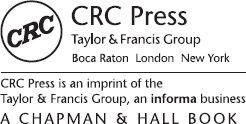
CRC Press
Taylor & Francis Group
6000 Broken Sound Parkway NW, Suite 300
Boca Raton, FL 33487-2742
2020 by Taylor & Francis Group, LLC
CRC Press is an imprint of Taylor & Francis Group, an Informa business
No claim to original U.S. Government works
Printed on acid-free paper
International Standard Book Number-13: 978-1-138-49256-1 (Hardback)
This book contains information obtained from authentic and highly regarded sources. Reasonable efforts have been made to publish reliable data and information, but the author and publisher cannot assume responsibility for the validity of all materials or the consequences of their use. The authors and publishers have attempted to trace the copyright holders of all material reproduced in this publication and apologize to copyright holders if permission to publish in this form has not been obtained. If any copyright material has not been acknowledged please write and let us know so we may rectify in any future reprint.
Except as permitted under U.S. Copyright Law, no part of this book may be reprinted, reproduced, transmitted, or utilized in any form by any electronic, mechanical, or other means, now known or hereafter invented, including photocopying, microfilming, and recording, or in any information storage or retrieval system, without written permission from the publishers.
For permission to photocopy or use material electronically from this work, please access www.copyright.com (http://www.copyright.com/) or contact the Copyright Clearance Center, Inc. (CCC), 222 Rosewood Drive, Danvers, MA 01923, 978-750-8400. CCC is a not-for-profit organization that provides licenses and registration for a variety of users. For organizations that have been granted a photocopy license by the CCC, a separate system of payment has been arranged.
Trademark Notice: Product or corporate names may be trademarks or registered trademarks, and are used only for identification and explanation without intent to infringe.
Visit the Taylor & Francis Web site at
http://www.taylorandfrancis.com
and the CRC Press Web site at
http://www.crcpress.com
Contents
The Traditional Introduction to Statistics
A traditional introduction to statistical thinking and methods is the two-semester probability and statistics course offered in mathematics and statistics departments. This traditional course provides an introduction to calculus-based probability and statistical inference. The first half of the course is an introduction to probability including discrete, continuous, and multivariate distributions. The chapters on functions of random variables and sampling distributions naturally lead into statistical inference including point estimates and hypothesis testing, regression models, design of experiments, and ANOVA models.
Although this traditional course remains popular, there seems to be little discussion in this course on the application of the inferential material in modern statistical practice. Although there are benefits in discussing methods of estimation such as maximum likelihood, and optimal inference such as a best hypothesis test, the students learn little about statistical computation and simulation-based inferential methods. As stated in Cobb (2015), there appears to be a disconnect between the statistical content we teach and statistical practice.
Developing a New Course
The development of any new statistics course should be consistent with current thinking of faculty dedicated to teaching statistics at the undergraduate level. Cobb (2015) argues that we need to deeply rethink our undergraduate statistics curriculum from the ground up. Towards this general goal, Cobb (2015) proposes five imperatives that can help the process of creating this new curriculum. These imperatives are to: (1) flatten prerequisites, (2) seek depth in understanding fundamental concepts, (3) embrace computation in statistics, (4) exploit the use of context to motivate statistical concepts, and (5) implement research-based learning.
Why Bayes?
There are good reasons for introducing the Bayesian perspective at the calculus-based undergraduate level. First, many people believe that the Bayesian approach provides a more intuitive and straightforward introduction than the frequentist approach to statistical inference. Given that the students are learning probability, Bayes provides a useful way of using probability to update beliefs from data. Second, given the large growth of Bayesian applied work in recent years, it is desirable to introduce the undergraduate students to some modern Bayesian applications of statistical methodology. The timing of a Bayesian course is right given the ready availability of Bayesian instructional material and increasing amounts of Bayesian computational resources.
We propose that Cobbs five imperatives can be implemented through a Bayesian statistics course. Simulation provides an attractive flattened prerequisites strategy in performing inference. In a Bayesian inferential calculation, one avoids the integration issue by simulating a large number of values from the posterior distribution and summarizing this simulated sample. Moreover, by teaching fundamentals of Bayesian inference of conjugate models together with simulation-based inference, students gain a deeper understanding of Bayesian thinking. Familiarity with simulation methods in the conjugate case prepares students for the use of simulation algorithms later for more advanced Bayesian models.
One advantage of a Bayes perspective is the opportunity to input expert opinion by the prior distribution which allows students to exploit context beyond a traditional statistical analysis. This text introduces strategies for constructing priors when one has substantial prior information and when one has little prior knowledge.
Font size:
Interval:
Bookmark:
Similar books «Probability and Bayesian Modeling»
Look at similar books to Probability and Bayesian Modeling. We have selected literature similar in name and meaning in the hope of providing readers with more options to find new, interesting, not yet read works.
Discussion, reviews of the book Probability and Bayesian Modeling and just readers' own opinions. Leave your comments, write what you think about the work, its meaning or the main characters. Specify what exactly you liked and what you didn't like, and why you think so.

